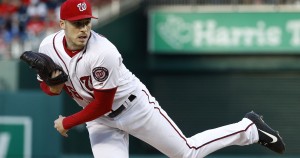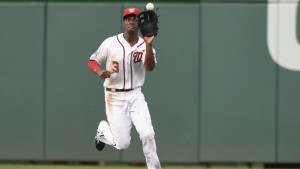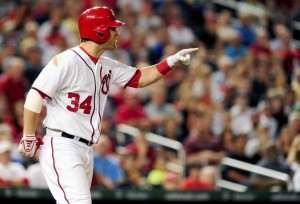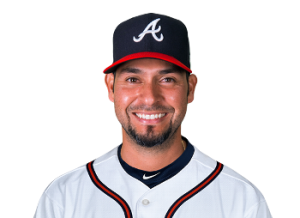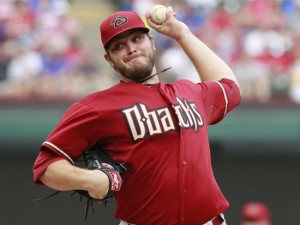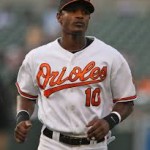The 2019 World Series is here. And boy does it look like its going to be a heck of a pitching duel. Thanks to the Astros finishing off the Yankees in 6 games, they (like our Nats) are able to perfectly setup their rotation as they wish. Which means … wow we’re going to have some pitching duels.
Here’s a preview of the pitching matchups, with my predictions game by game.
- Game 1; 10/22/19: Was@Hou: Max Scherzer vs Gerrit Cole: Cole is either finishing 1st or 2nd in AL Cy Young voting and has been unhittable this post season (3 starts, 22 2/3rds innings, 10 hits, 8 walks, just ONE earned run, 32 Ks). So its going to be a tall task to get to him in Game 1. Scherzer is Big Game Max: he got hit a bit in the WC game, but his three NLCS and NLDS appearances are pretty solid: 15 innings and one earned run vs the Dodgers and Cardinals, including a 1-hit 7 inning domination of St. Louis in Game 2 to really put the series out of reach. Prediction? I think Cole continues his hot streak and out-duels Scherzer in a 1-0 or a 2-1 type game.
- Game 2: 10/23/19: Was@Hou: Stephen Strasburg vs Justin Verlander: Verlander likely wins the Cy Young (if it isn’t Cole) thanks to an amazing age 36 season … but he’s been quite hittable this post-season. He’s got 4 starts, has given up 10 runs in 23 innings. Strasburg has not been hittable, this off-season or any other; he continues to put up Sandy Koufax esque post-season numbers; he got hit in LA but held on to keep the team in the game, then blew away St. Louis. I like Strasburg here and think the Nats can sneak a win in game 2.
- Game 3: 10/25/19: Hou@Wash: Zack Greinke vs Patrick Corbin: i wonder what Arizona fans are thinking when they watch this game. Greinke might be the best #3 starter in the game, or maybe Corbin is. Greinke got knocked out by Tampa in the NLDS, and wasn’t lights out or anything in the NLDS either; the Nats can score runs against him. Corbin has also been hit or miss this post-season, with an ugly 7+ ERA despite striking out 26 in 13 innings. The Astros hit the ball, irrespective of lefty or righty, so this game might be one where the bullpens of both teams get exposed a bit. Can Corbin make it happen? One good thing going for him; he’s significantly better at home vs on the road (2.40 ERA versus 4.18 ERA away). Of course … Greinke shows reverse H/A splits himself, and is no stranger to playing the Nats (he dominated the Nats in June, shutting them down in our park to the tune of 7ip, 2h). I think Astros can get back home-field advantage here.
- Game 4: 10/26/19: Hou@Wash: Bullpen vs Anibal Sanchez: Game 4 could be interesting; the Astros don’t really have a 4th starter they trust; they’ve gotten to this point riding their big 3 starters and getting by with openers and bullpen games otherwise. So this could be former Nat Brad Peacock or perhaps Wade Miley, who seemed to be their 4th starter all season but who didn’t even appear in the ALCS. Can Sanchez do what he did again against St. Louis? Can a bullpen game shutdown the Nats? I like the Nats here to get a solid start and to get at the slightly-hittable Houston bullpen.
- Game 5: 10/27/19: Cole vs Scherzer: You think big-game Max is losing a home start? I don’t think so. The Nats get to Cole and take a 3-2 series lead heading back to Houston.
- Game 6: 10/29/19: Verlander vs Strasburg: Verlander recovers and pitches the game of his life to push the series to Game 7.
- Game 7: 10/30/19: Corbin vs Greinke: Nats get to Greinke again, Corbin gets hit … game turns into a bullpen game … Nats pull another late-inning come back and win in 7.
Sound good?
One thing I did want to point out. There’s a very solid sportswriter narrative out there that teams can get “cold” with long layoffs like the Nats have had. And there’s some SSS proof that indeed teams who sweep have a struggle in the series. Teams are just 1 for 9 in the World Series after sweeping the LCS in four games since 1985 (when the LCS was expanded to 7 games). See https://sports.yahoo.com/tbs-crew-explains-nationals-avoid-044927265.html (thanks Luke Erickson for the link, which you can also find on ESPN and other places). This is obviously worrisome for the Nats, who have taken some steps to stay hot. On the one hand, I think a veteran team will benefit from the longer layoff to rest muscles and get bodies ready to go. I think Victor Robles will cherish the time to let his leg heal a bit. And of course, the rest lets all the starters (most of whom were pulling double duty starting and relieving) to rest up and get into their regular schedules. On the other hand …. 1 for 9. And they’re going against a 107-win team.
One other thing worth pointing out: the four games in the AL gives the Nats a unique opportunity to finally be able to play their best defensive roster and stick MVP Howie Kendrick in the DH spot. I like having Asdrubal Cabrera in the lineup with his switch-hitting bat and veteran approach and his better-than-Kendrick defense. That’s huge for this team.
